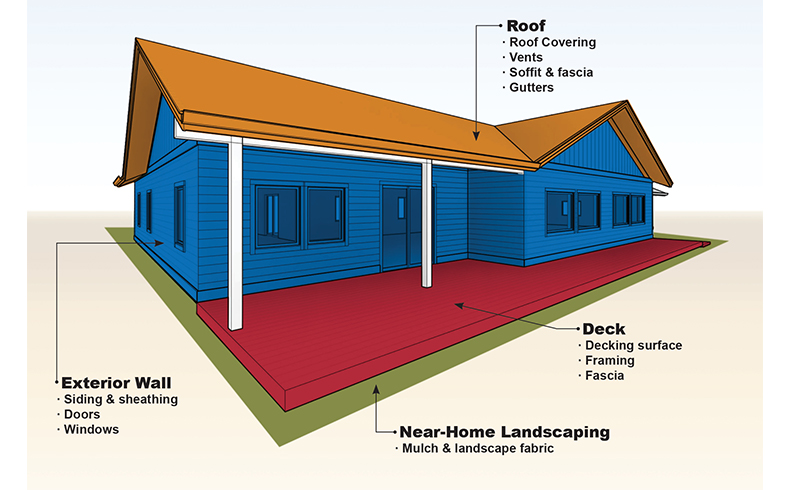[et_pb_section bb_built=”1″ _builder_version=”3.0.76″][et_pb_row][et_pb_column type=”4_4″][et_pb_text _builder_version=”3.2.1″]
November 2018. As part of the CPAW program, Headwaters Economics and the Insurance Institute for Business and Home Safety released a new report that documents negligible cost differences between building a typical home and a home constructed using wildfire-resistant materials and design features.
The study examines the cost of new construction and retrofitting four of the components most vulnerable to wildfire: the roof, exterior walls, deck, and landscaping. It also compares three statewide or national building codes that have been developed for construction in wildfire-prone lands, including the International Wildland Urban Interface (WUI) Code, the National Fire Protection Association’s Standard 1144, and the California Building Code Chapter 7A.
While the perceived cost of implementing such regulations has been a commonly cited barrier to consideration by some communities, little research has previously examined how much it would actually cost the homeowner or builder to comply with such regulations.
Review the full report, an executive summary, and data tables here.
[/et_pb_text][/et_pb_column][/et_pb_row][/et_pb_section]
